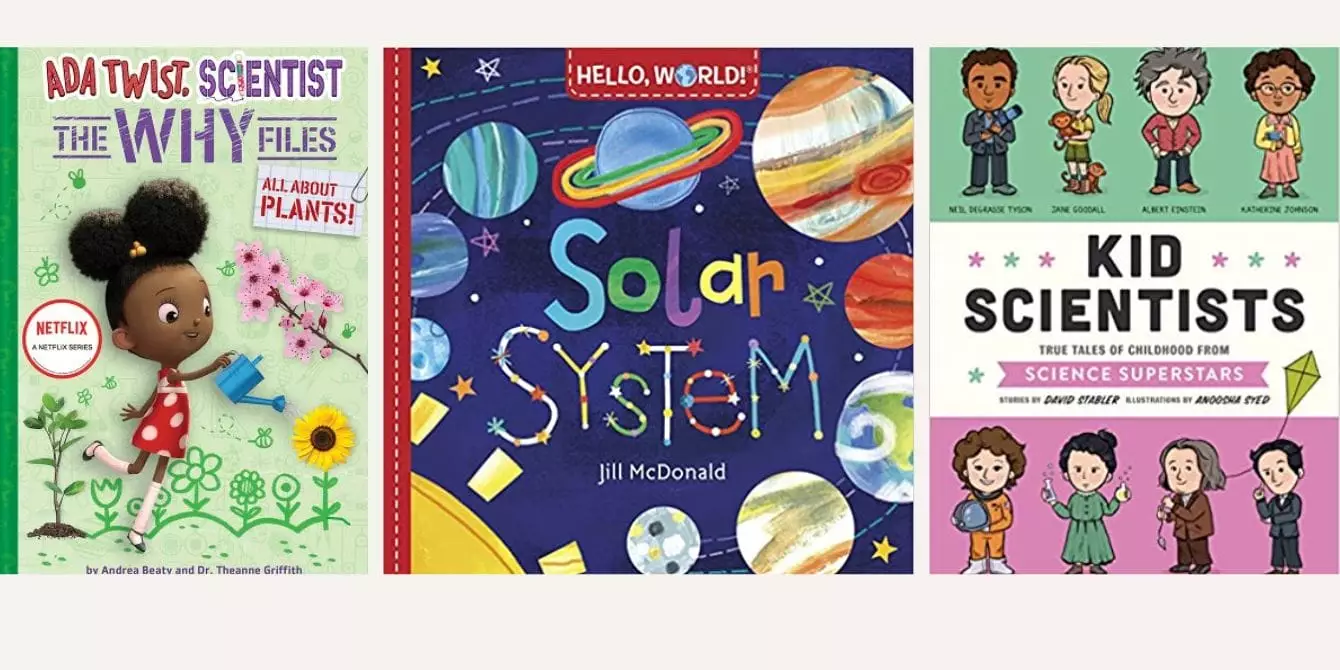Every child embodies a genuine sense of awe and curiosity about the world around them. From the innocent musings of toddlers over a single blade of grass to the incessant “why” questions posed by curious kids, this intrinsic scientific inquiry should be nurtured. By providing children with age-appropriate literature that introduces scientific concepts in relatable manners, we can stimulate their imaginations while enriching their understanding of the universe. Not only do kids benefit from engaging with these texts, but adults can also glean vital knowledge from them, proving that the pursuit of learning knows no age boundaries.
Books That Spark Curiosity
Children’s literature, especially in the realm of STEM (Science, Technology, Engineering, and Mathematics), offers a vital resource for nurturing a love of learning. Books that incorporate interactive experiments, storytelling, and engaging visuals transform abstract scientific ideas into tangible experiences. Using literature that invites exploration, such as a captivating tale about a bat discovering its ability to see in the dark through echolocation, not only introduces children to fundamental scientific principles but also encourages them to experiment and think critically. With companion activities providing tangible connections to the concepts learned, these books serve as effective gateways to deeper understanding.
Visual aids play a crucial role in maintaining the attention of young learners, and books that offer vibrant illustrations while communicating complex subjects like human anatomy become invaluable tools. One such book introduces children to the intricacies of the human body through die-cut pages and layered illustrations, making skeletal systems and organ functions both accessible and interesting. Such resources resonate with their intended age groups but can also appeal to younger siblings, all the while maintaining the allure of exploration. The engaging visual representations are essential for drawing children’s eyes and imaginations to the anatomy lessons presented.
Connecting Science with Literature
Literature that intertwines science with storytelling can ignite a multitude of passions in young minds. The profound relationship between characters and scientific principles is brought to life in books inspired by beloved scientific-themed stories, such as the “Ada Twist, Scientist” series. Here, botany is explored in a fun, scrapbook-style format that inspires kids to take an active interest in nature’s mysteries. By pairing educational content with narratives that capture children’s imagination, readers embark on delightful journeys through various subjects, ensuring that scientific knowledge is not only informative but also enjoyable.
Historical Figures in Science
Understanding the history of science through the eyes of its predecessor figures can inspire children to navigate their curiosity and be innovative thinkers. The “Kid Legends” series transports young readers into the formative years of iconic scientists, giving insight into how their childhood experiences shaped their futures. By spotlighting pivotal moments in these innovators’ early lives, children are motivated to connect their own personal curiosities and experiences to remarkable achievements. This portrays the relevance of persistence, imagination, and exploration in scientific discovery.
A significant aspect of nurturing curiosity lies in recognizing varied contributions to science. Literature that sheds light on remarkable women in science from ancient times to contemporary achievements empowers young minds, showcasing the diverse accomplishments that have shaped scientific history. By marrying illustrations with essential facts, these stories highlight important contributors, encouraging children to aspire to contribute meaningfully to the world around them.
Today’s young readers face unconventional challenges, such as the ongoing pandemic. Literature addressing these topics, such as virology and health safety, arms children with knowledge and solutions during uncertain times. Engaging illustrations simplify complex ideas, empowering kids to grasp essential concepts and understand their relevance. Connecting scientific learning with contemporary realities helps instill resilience and a sense of agency in children, nurturing a proactive approach to examining the world.
Adventure in Learning: Scientific Mysteries Await
The intersection of adventure and education can create powerful learning experiences. Series that involve characters solving mysteries through scientific principles captivate young audiences while providing education in chemistry, physics, and biology. For instance, engaging narratives will enchant kids as they follow characters who confront problems and find solutions, familiarizing readers with scientific concepts in an enjoyable manner. This method fosters a love of problem-solving and critical thinking habits that will benefit them throughout their lives.
In an age where curiosity can easily be overshadowed by screens and distractions, cultivating a robust interest in science through literature can lead to the development of lifelong learners. Encouraging children to dive into STEM books that spark their interest and imagination paves the way towards greater pursuits in innovation and creativity. By exposing young minds to the wonders of the scientific realm, we empower them to ask questions, seek answers, and ultimately, to thrive in an increasingly complex world.

